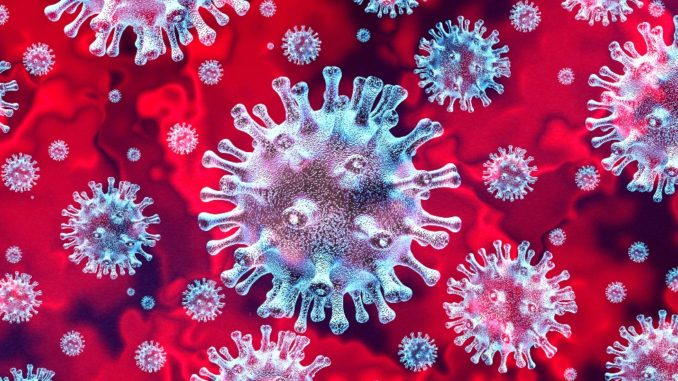
Chloroquine (CQ) and hydroxychloroquine (HCQ) are quite famous nowadays due to their potential in treatment of COVID-19. They are not still approved by FDA for treatment of COVID-19. However, many clinical trials are going on to access their efficacy in treating COVID-19. Let’s know about chloroquine and hydroxychloroquine in detail.
What are chloroquine and hydroxy chloroquine?
Chloroquine and hydroxychloroquine belong to the class of drugs ‘4 amino-quinolone’. Chloroquine is used for clinical purpose since 1944. Hydroxychloroquine sulfate (HCQ) was synthesized in 1950 with the addition of a hydroxyl group to CQ. Both drugs consist of basic side chain which contribute to accumulation of these drugs in intracellular compartments, especially lysosomal compartments. This feature is crucial for their activity and possible interaction of these drugs with nucleic acid.

Pharmacokinetics
Hydroxychloroquine is administered as a sulfate, whereas chloroquine is administered as a phosphate salt. Both drugs are usually absorbed in the upper intestinal tract. They are metabolized in liver. Cytochrome P450 (CYP) enzymes mediate dealkylation of chloroquine and hydroxychloroquine. Desethylchloroquine is an immediate downstream product of CYP-mediated dealkylation of both drugs. They have long half-life due to their large volume of distribution in blood. Plasma, blood and serum concentrations of hydroxychloroquine and chloroquine can vary in individual patients (particularly concentrations measured in the serum and whole blood) and between patients (interpatient variability). There is not enough information regarding concentration of drugs in ‘deep’ organs like bone marrow, synovial tissue, lymphoid tissue, immune cells.

Mechanism of action
Various mechanism of action is postulated to explain different therapeutic effects.
For antimalarial action: In human body, malarial parasite digest hemoglobin in their lysosomes to utilize amino acids. The heme which is released during this is highly toxic but is converted to nontoxic hemozoin by parasitic polymerase. Chloroquine and hydroxy chloroquine are basic drugs and gets concentrated in acidic lysosomes and bind to released heme thus preventing its polymerization by parasite. This causes oxidative damage to organelles of parasite, causing death.

Potential mechanism of hydroxychloroquine during autoimmunity: Hydroxychloroquine and chloroquine are also used for treating autoimmune disorders like rheumatoid arthritis and systemic lupus erythematosus. There are two possible pathways for their role in autoimmunity. It gets accumulated in lysosome and increase the pH to prevent activity of lysosomal activity thus inhibiting degradation of cargo derived externally (via endocytosis or phagocytosis) or internally (via the autophagy pathway). Inhibition of lysosomal activity prevent presentation of MHC class II-mediated autoantigen.
The second possible mechanism is due to their accumulation in endosomes. It alters pH of endosomes and inhibit TLR (Toll Like Receptors) signaling. It also inhibits activity of the nucleic acid sensor cyclic GMP-AMP (cGAMP) synthase (cGAS) by interfering with its binding to cytosolic DNA. TLR signaling and cGAS–stimulator of interferon genes (STING) signaling are responsible for production of pro-inflammatory cytokines, including type I interferons. Thus, it reduces the production of pro-inflammatory cytokines by preventing both TLR signaling and cGAS–stimulator of interferon genes (STING) signaling.

Therapeutic uses
- Used as first line treatment for malaria.
- In hepatic amoebiasis.
- In giardiasis.
- In rheumatoid arthritis, systemic lupus erythematous.
- In antiphospholipid syndrome.
Adverse effects
Some common side effects are rashes, pruritus, insomnia, transient depression. Retinopathy and neuromyopathy may occur in long run. Abnormalities of ST segment and T waves are reported.
Potential in treating COVID-19
Chloroquine and hydroxychloroquine have garnered considerable attention for their potential to treat coronavirus disease 2019 (COVID-19). Increasing evidence obtained from completed clinical studies indicates the prospects for chloroquine/hydroxychloroquine to treat COVID-19. More randomized control clinical studies are warranted to determine the feasibility of these two drugs in treating COVID-19.
References
- Smolen, J. S. et al. EULAR recommendations for the management of rheumatoid arthritis with synthetic and biological disease-modifying antirheumatic drugs: 2013 update. Ann. Rheum. Dis 2014. 73: 492–509.
- Fanouriakis, A. et al. 2019 update of the EULAR recommendations for the management of systemic lupus erythematosus. Ann. Rheum. Dis. 2019. 78: 736–745.
- Pons-Estel, B. A. et al. First Latin American clinical practice guidelines for the treatment of systemic lupus erythematosus: Latin American Group for the Study of Lupus (GLADEL, Grupo Latino Americano de Estudio del Lupus)-Pan-American League of Associations of Rheumatology (PANLAR). Ann. Rheum. Dis 2018. 77: 1549–1557.
- Eva Schrezenmeier, Thomas Dörner. Mechanisms of action of hydroxychloroquine and chloroquine: implications for rheumatology. Nature Reviews Rheumatology 2020. 16:155-166.
- Shah S, Das S, Jain A, Misra DP, Negi VS. A systematic review of the prophylactic role of chloroquine and hydroxychloroquine in Coronavirus Disease-19 (COVID-19). Int J Rheum Dis. 2020.
- Gao J, Hu S. Update on use of chloroquine/hydroxychloroquine to treat coronavirus disease 2019 (COVID-19). Biosci Trends. 2020 Apr 13.
- Pharmacology and Pharmacotherapeutics. Page no- 790-793.